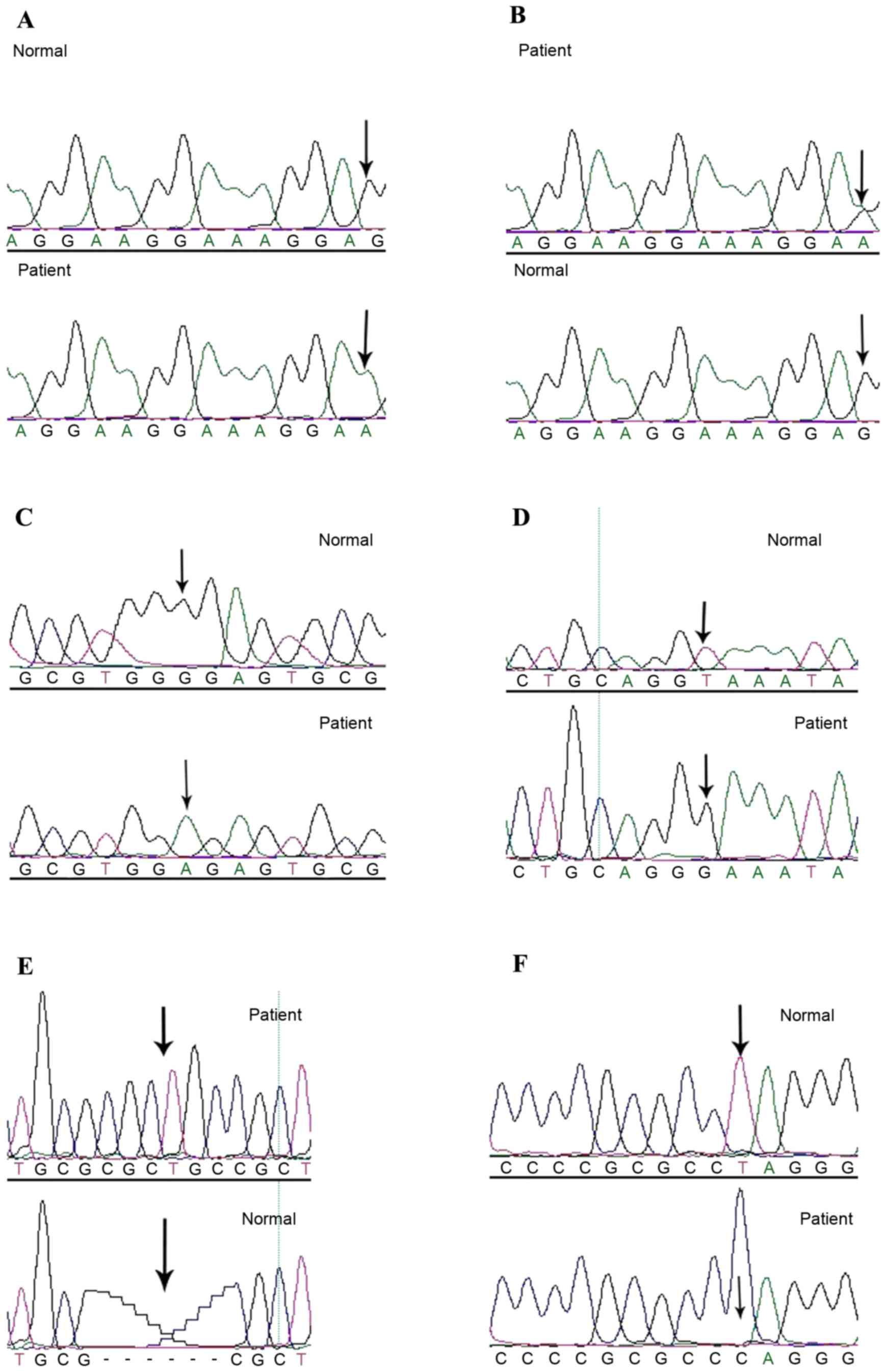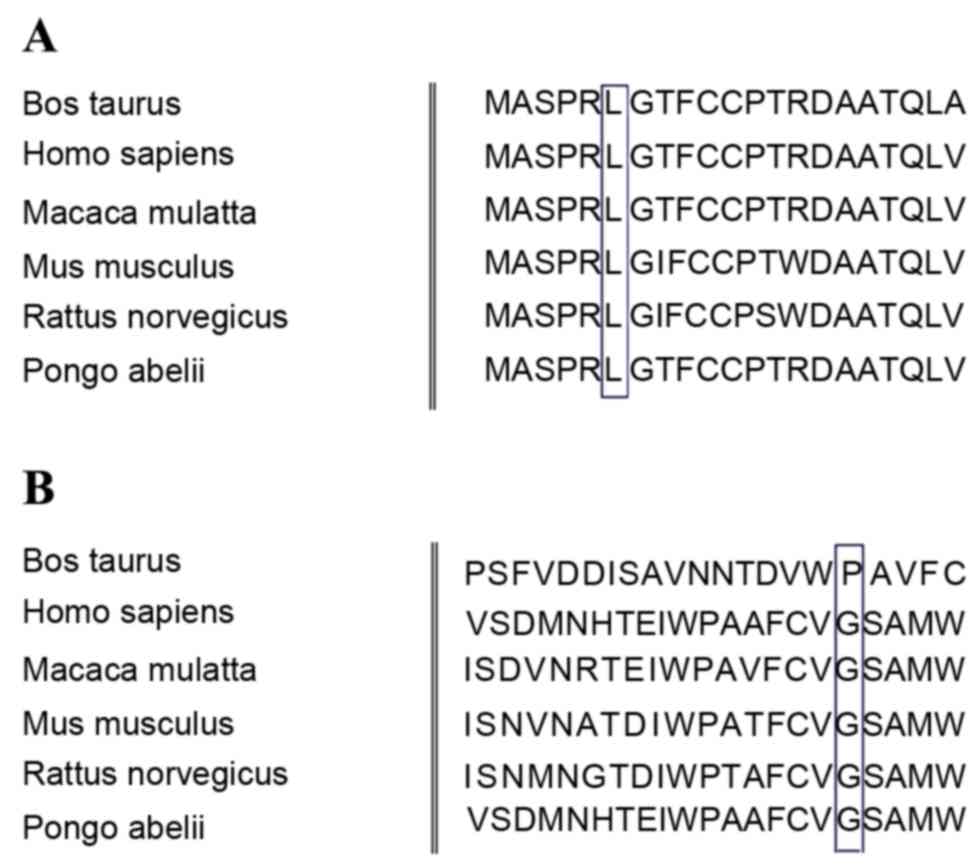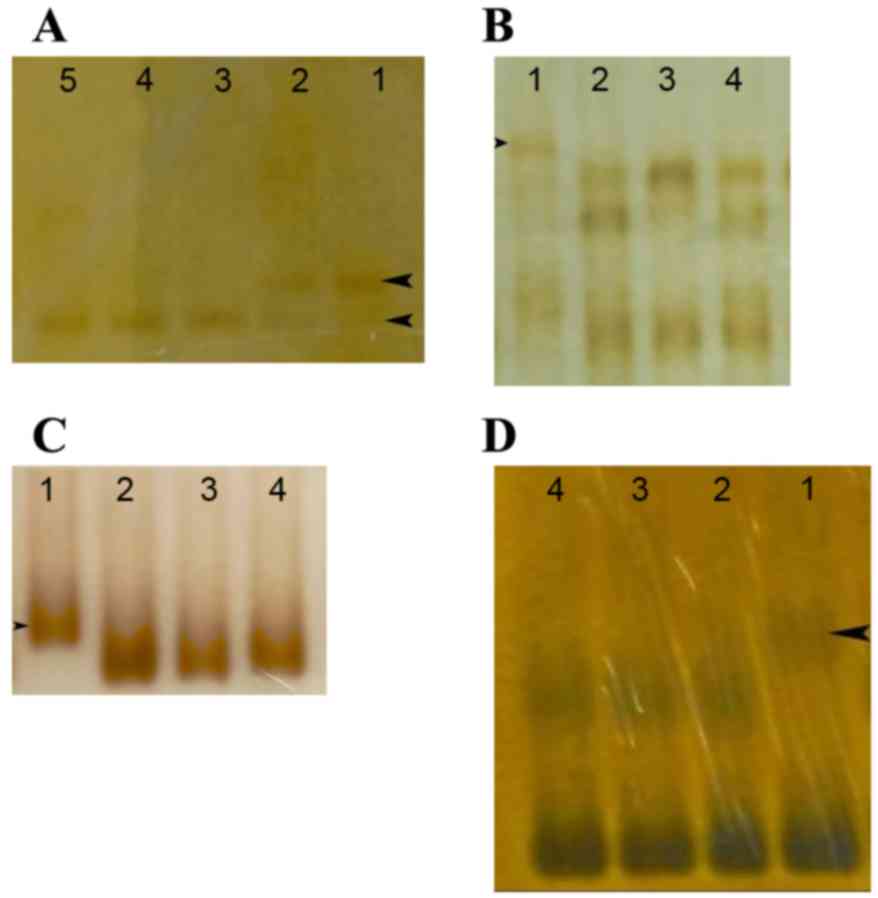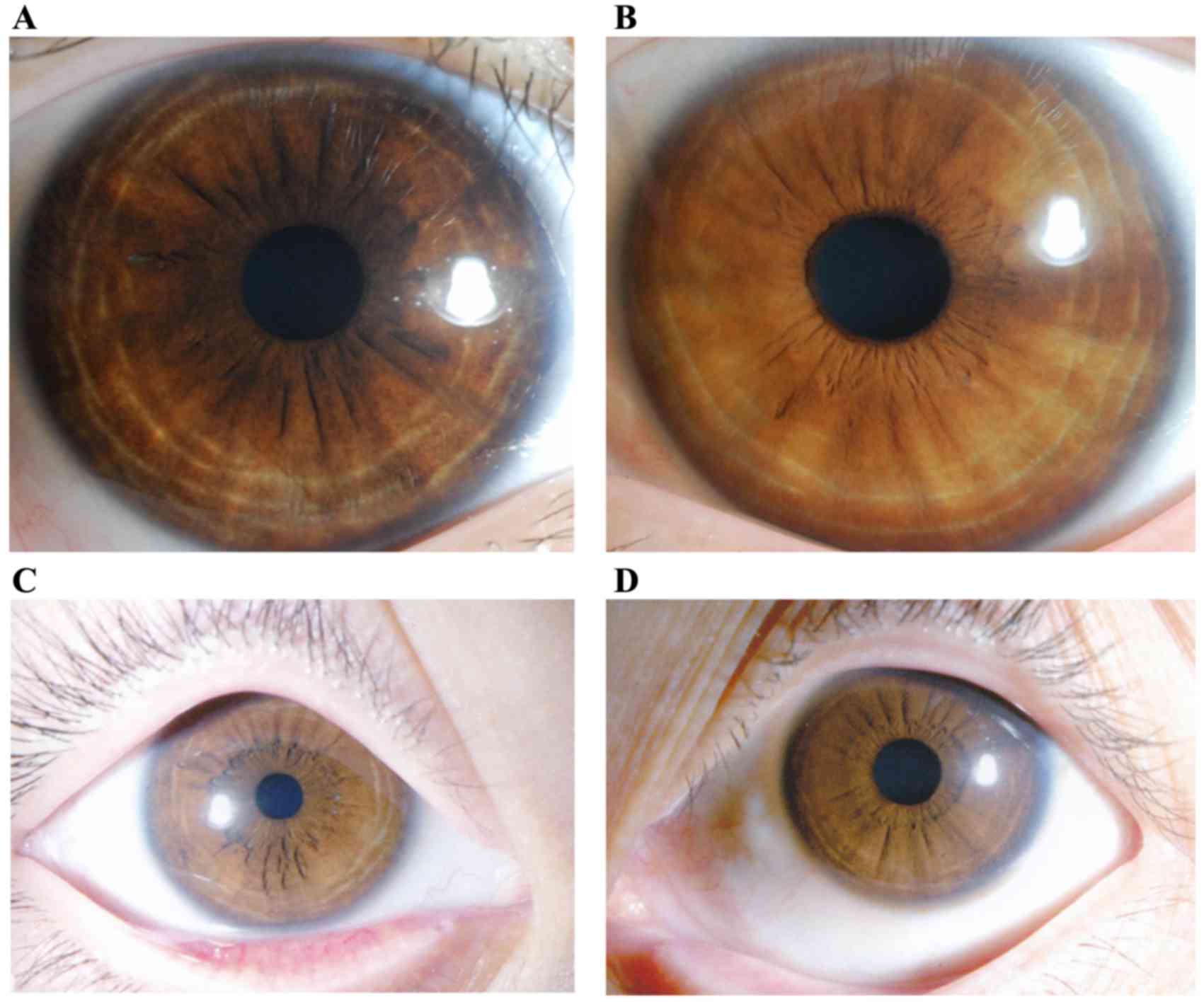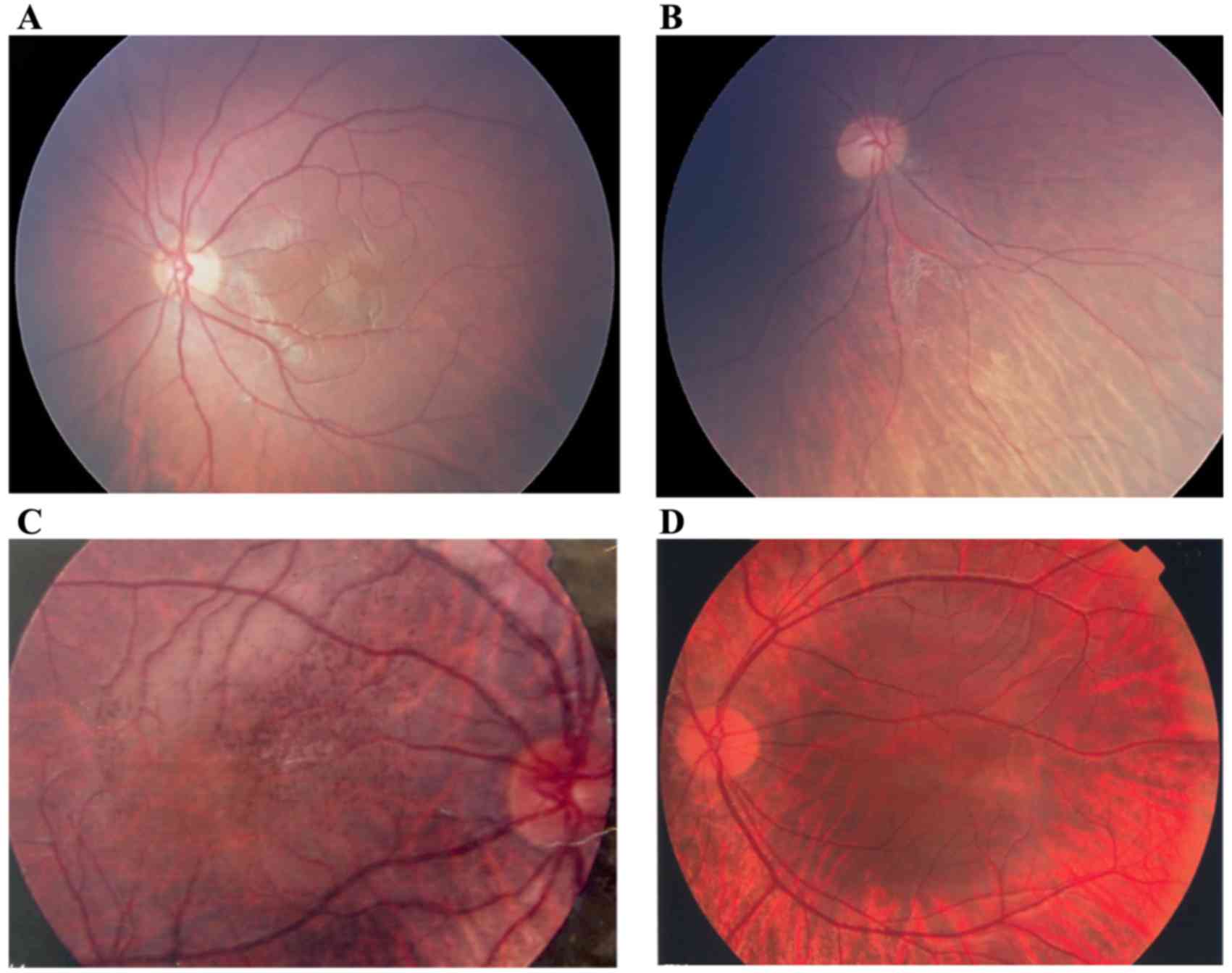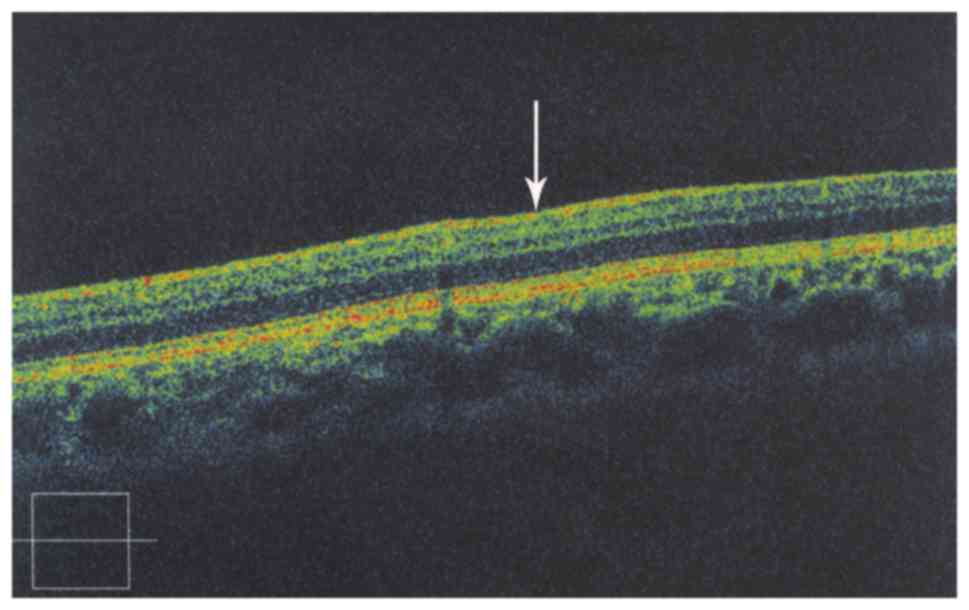|
1
|
Schnur RE, Gao M, Wick PA, Keller M, Benke
PJ, Edwards MJ, Grix AW, Hockey A, Jung JH, Kidd KK, et al: OA1
mutations and deletions in X-linked ocular albinism. Am J Hum
Genet. 62:800–809. 1998. View
Article : Google Scholar : PubMed/NCBI
|
|
2
|
Rosenberg T and Schwartz M: X-linked
ocular albinism: Prevalence and mutations-a national study. Eur J
Hum Genet. 6:570–577. 1998. View Article : Google Scholar : PubMed/NCBI
|
|
3
|
O'Donnell FE Jr, King RA, Green WR and
Witkop CJ Jr: Autosomal recessively inherited ocular albinism. A
new form of ocular albinism affecting females as severely as males.
Arch Ophthalmol. 96:1621–1625. 1978. View Article : Google Scholar : PubMed/NCBI
|
|
4
|
Cortin P, Tremblay M and Lemagne JM:
X-linked ocular albinism: Relative value of skin biopsy, iris
transillumination and funduscopy in identifying affected males and
carriers. Can J Ophthalmol. 16:121–123. 1981.PubMed/NCBI
|
|
5
|
Lam BL, Fingert JH, Shutt BC, Singleton
EM, Merin LM, Brown HH, Sheffield VC and Stone EM: Clinical and
molecular characterization of a family affected with X-linked
ocular albinism (OA1). Ophthalmic Genet. 18:175–184. 1997.
View Article : Google Scholar : PubMed/NCBI
|
|
6
|
Sallmann GB, Bray PJ, Rogers S, Quince A,
Cotton RG and Carden SM: Scanning the ocular albinism 1 (OA1) gene
for polymorphisms in congenital nystagmus by DHPLC. Ophthalmic
Genet. 27:43–49. 2006. View Article : Google Scholar : PubMed/NCBI
|
|
7
|
Schiaffino MV, d'Addio M, Alloni A,
Baschirotto C, Valetti C, Cortese K, Puri C, Bassi MT, Colla C, De
Luca M, et al: Ocular albinism: Evidence for a defect in an
intracellular signal transduction system. Nat Genet. 23:108–112.
1999. View Article : Google Scholar : PubMed/NCBI
|
|
8
|
Samaraweera P, Donatien PD, Qazi S,
Kobayashi T, Hearing VJ, Panthier JJ and Orlow SJ: Identification
and characterization of a melanocyte-specific novel 65-kDa
peripheral membrane protein. Eur J Biochem. 266:924–934. 1999.
View Article : Google Scholar : PubMed/NCBI
|
|
9
|
d'Addio M, Pizzigoni A, Bassi MT,
Baschirotto C, Valetti C, Incerti B, Clementi M, De Luca M,
Ballabio A and Schiaffino MV: Defective intracellular transport and
processing of OA1 is a major cause of ocular albinism type 1. Hum
Mol Genet. 9:3011–3018. 2000. View Article : Google Scholar : PubMed/NCBI
|
|
10
|
Yan J and Dennin RH: High homologous
nucleotide to GBV-C was amplified from DNA of MT2 and HeLa cells
and PBMC of human and chimpanzee. Acta Pharmacol Sin. 22:320–326.
2001.PubMed/NCBI
|
|
11
|
Zhang Q and Minoda K: Detection of
congenital color vision defects using heteroduplex-SSCP analysis.
Jpn J Ophthalmol. 40:79–85. 1996.PubMed/NCBI
|
|
12
|
Stone EM: Leber congenital amaurosis-a
model for efficient genetic testing of heterogeneous disorders:
LXIV edward jackson memorial lecture. Am J Ophthalmol. 144:791–811.
2007. View Article : Google Scholar : PubMed/NCBI
|
|
13
|
Sale MM, Craig JE, Charlesworth JC,
FitzGerald LM, Hanson IM, Dickinson JL, Matthews SJ, Heyningen Vv,
Fingert JH and Mackey DA: Broad phenotypic variability in a single
pedigree with a novel 1410delC mutation in the PST domain of the
PAX6 gene. Hum Mutat. 20:3222002. View Article : Google Scholar : PubMed/NCBI
|
|
14
|
Giordano F, Bonetti C, Surace EM, Marigo V
and Raposo G: The ocular albinism type 1 (OA1) G-protein-coupled
receptor functions with MART-1 at early stages of melanogenesis to
control melanosome identity and composition. Hum Mol Genet.
18:4530–4545. 2009. View Article : Google Scholar : PubMed/NCBI
|
|
15
|
Bassi MT, Bergen AA, Bitoun P, Charles SJ,
Clementi M, Gosselin R, Hurst J, Lewis RA, Lorenz B, Meitinger T,
et al: Diverse prevalence of large deletions within the OA1 gene in
ocular albinism type 1 patients from Europe and North America. Hum
Genet. 108:51–54. 2001. View Article : Google Scholar : PubMed/NCBI
|
|
16
|
Schiaffino MV, Bassi MT, Galli L, Renieri
A, Bruttini M, De Nigris F, Bergen AA, Charles SJ, Yates JR, Meindl
A, et al: Analysis of the OA1 gene reveals mutations in only
one-third of patients with X-linked ocular albinism. Hum Mol Genet.
4:2319–2325. 1995. View Article : Google Scholar : PubMed/NCBI
|
|
17
|
Rudolph G, Meindl A, Bechmann M, Schworm
HD, Achatz H, Boergen KP, Kampik A, Berninger T and Meitinger T:
X-linked ocular albinism (Nettleship-Falls): A novel 29-bp deletion
in exon 1. Carrier detection by ophthalmic examination and DNA
analysis. Graefes Arch Clin Exp Ophthalmol. 239:167–172. 2001.
View Article : Google Scholar : PubMed/NCBI
|
|
18
|
Sone M and Orlow SJ: The ocular albinism
type 1 gene product, OA1, spans intracellular membranes 7 times.
Exp Eye Res. 85:806–816. 2007. View Article : Google Scholar : PubMed/NCBI
|
|
19
|
Camand O, Boutboul S, Arbogast L, Roche O,
Sternberg C, Sutherland J, Levin A, Héon E, Menasche M, Dufier J
and Abitbol M: Mutational analysis of the OA1 gene in ocular
albinism. Ophthalmic Genet. 24:167–173. 2003. View Article : Google Scholar : PubMed/NCBI
|
|
20
|
O'Donnell FE Jr, Green WR, Fleischman JA
and Hambrick GW: X-linked ocular albinism in Blacks. Ocular
albinism cum pigmento. Arch Ophthalmol. 96:1189–1192. 1978.
View Article : Google Scholar : PubMed/NCBI
|
|
21
|
Shiono T, Tsunoda M, Chida Y, Nakazawa M
and Tamai M: X linked ocular albinism in Japanese patients. Br J
Ophthalmol. 79:139–143. 1995. View Article : Google Scholar : PubMed/NCBI
|



